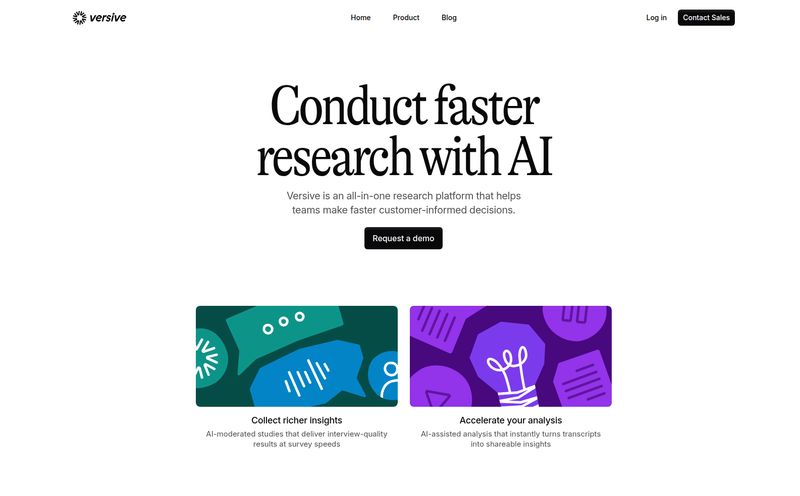Spreadsheet hell. We've all been there. It's that last week of the month scramble, where you're wrestling with VLOOKUPs and pivot tables that seem to have a mind of their own, just trying to make sense of the numbers. You export data from Xero, maybe some more from QuickBooks for another entity, and try to stitch it all together into a report that doesn't look like a ransom note. It’s a grind. A necessary evil we’ve all just sort of… accepted.
But what if it didn't have to be? I keep hearing whispers in the industry, and seeing ads pop up, for platforms that promise a better way. One of those names is Syft Analytics, which boldly calls itself "The only AI-first financial reporting platform." A customer testimonial on their own site even calls the combination of their accounting software and Syft a panacea. That's a big word. A cure-all. My inner skeptic immediately perked up. So, I decided to take a look and see if Syft is really the remedy for our reporting headaches or just another bottle of snake oil.
What Exactly is Syft Analytics Anyway?
Let’s get this out of the way first. Syft isn’t accounting software. It’s not trying to replace your beloved Xero, QuickBooks, or Sage. Instead, think of it as a powerful performance upgrade for them. It plugs directly into the tools you already use and sucks in all that beautiful, messy data. Then, it acts as a translator. It takes the raw numbers, the debits and credits, the sales figures and expenses, and turns them into something you can actually use: clean dashboards, insightful reports, and even forecasts about the future.
The core idea is to bridge the massive gap between having financial data and actually understanding it. It's designed to make complex information digestible, not just for us finance nerds but for stakeholders, clients, and managers who just want to know, “Are we on the right track?” It's about turning hindsight into foresight.

Visit Syft Analytics
The Features That Actually Matter
A features list can be boring, so let’s not do that. Instead, let's talk about what this thing actually does for you in the real world.
From Messy Data to Clean Dashboards
This is the bread and butter. The first thing you'll notice is how Syft takes your chaotic data and presents it visually. We’re talking graphs, charts, and key performance indicators (KPIs) all laid out on a clean dashboard. You can customize these to track what's important to your business, whether that’s monthly recurring revenue, customer acquisition cost or just plain old profit. It integrates with a whole host of platforms—not just the big accounting packages but also things like Shopify and Stripe—so you get a much fuller picture of what's happening financially.
Peeking into the Future with Forecasting
This, for me, is where things get really interesting. Standard accounting reports tell you what happened last month. That's useful, but it’s like driving a car by only looking in the rearview mirror. Syft’s forecasting tools allow you to start looking through the windshield. It uses your historical data to project future performance, letting you build out cash flow forecasts and budgets. You can even run “what-if” scenarios. What if we hire two new salespeople? What if we lose our biggest client? This moves you from a reactive position to a proactive one, and that's a genuine game-changer for strategic planning.
The Consolidation Conundrum Solved
Now, if you run a single, simple business, you can probably skip this part. But if you're an accountant or a business owner with multiple entities, you know the pain. And let's be honest, 'consolidation' is a word that sends a shiver down the spine of any accountant who's had to do it manually. It's a time-consuming, error-prone nightmare of exporting, combining, and eliminating inter-company transactions. Syft automates this. It can pull data from multiple Xero or QuickBooks files, handle different currencies, and spit out a consolidated financial statement. The fact that a company like Atari—yes, that Atari—uses it for this very purpose speaks volumes.
Let's Talk about the "AI" in Syft
"AI" is the marketing buzzword of the decade, right? Sometimes it just means a tool has a few fancy 'if-then' statements. I was skeptical here, but Syft’s application seems pretty practical. Their Syft Assist AI is designed to act like a junior analyst. It scans your data for anomalies, errors, and potential fraud. It provides written commentary on financial reports, giving you a head start on your analysis. It's not Skynet, it's not going to run your business for you. But it does promise to save you time by pointing out the things you should be looking at first. It’s an efficiency tool, and in the world of billable hours and tight deadlines, efficiency is money.
Okay, But How Much Does Syft Analytics Cost?
This is always the million-dollar question. Or, in this case, the $19-a-month question. One of the best things Syft has going for it is its pricing structure. It’s pretty transparent and offers a clear path for growth.
First off, there's a Free plan. And it’s not one of those useless, crippled free plans either. The 'Basic' tier gives you unlimited users, dashboards, and graphs. For a freelancer or a very small business just wanting to visualize their data better, this is an incredible starting point. You can get a feel for the platform without ever touching your credit card.
Then you move into the paid tiers, which are billed monthly but require an annual commitment—something to definitely keep in mind. Here's a quick rundown:
- Standard ($19/month): This unlocks the core reporting features, spreadsheet linking, and basic forecasting. It’s the sweet spot for many small businesses and sole-practitioner accountants who need more than the free plan offers.
- Plus ($39/month): This is where it gets more serious. You get multi-currency consolidations, more advanced forecasting, and better visualization tools. Growing businesses or accounting firms with a handful of clients would find a lot of value here.
- Advanced ($79/month): This is the top-tier plan. It includes everything from the other plans plus high-scale infrastructure, 10-year planning windows, and the deepest AI insights. This is built for larger accounting firms, CFOs, and businesses with complex financial structures.
The annual commitment might be a bit of a hurdle for some, but the price points themselves are very competitive compared to other business intelligence tools out there.
My Real-World Take on Syft Analytics
After playing around with it and connecting it to a demo account, I've got some thoughts. It's not a magical wand, but it's a seriously impressive tool.
The Good Stuff I Actually Liked
The onboarding is smooth. Connecting an accounting file is a matter of a few clicks, not a week-long IT project. The user interface is clean, and for how much power is under the hood, it doesn’t feel overwhelming. The reports it generates are professional and client-ready right out of the box, which can make a small firm look like a major player. And I have to say it again, the free plan is genuinely useful, which builds a lot of goodwill from the get-go.
A Few Things to Keep in Mind
This isn't a tool for a complete financial novice. While it makes data easier to understand, you still need to know what you're looking at. A cash flow forecast is only as good as the assumptions you put into it. Also, while the Free plan is great, the really powerful, time-saving features like consolidations and deep AI analysis are, understandably, locked behind the paid plans. This is a classic freemium model, and it works, but you need to be aware that to get the full experience, you'll need to pay.
Who Should Use Syft Analytics (And Who Shouldn't)?
So, is it for you? In my opinion, it's a fantastic fit for a few key groups:
- Accounting & Bookkeeping Firms: This is a no-brainer. It will streamline your reporting process, add value to your client services, and save you countless hours.
- Businesses with Multiple Entities: If you're managing more than one company, the consolidation feature alone is probably worth the price of admission.
- Data-Driven SMB Owners: If you're the type of owner who loves digging into the numbers and wants to make strategic, forward-looking decisions, Syft will be your new favorite toy.
Who could probably skip it? A solopreneur with very straightforward finances might find the built-in reporting in Xero or QuickBooks to be 'good enough.' If your business isn't complex and you aren't focused on deep analysis or forecasting, this might be overkill. But for anyone looking to level up their financial intelligence, it’s worth a serious look.
So, is Syft Analytics a panacea? No, of course not. It won't fix a flawed business model or magically generate sales. But it is a powerful, well-designed, and fairly-priced remedy for the chronic pain of financial reporting and analysis. It clears the fog, giving you a much better view of where your business has been, where it is now, and most importantly, where it's going.
Frequently Asked Questions about Syft Analytics
- Is Syft Analytics safe to use with my financial data?
- Yes. They take security seriously, highlighting their security accreditations and trust reports on their site. They use secure infrastructure and have defined procedures to help ensure your data is protected, which is crucial when dealing with sensitive financial information.
- Can I really use Syft for free forever?
- Yes, the Basic plan is free and includes unlimited users, dashboards, and graphs. It's a great way to get started. More advanced features like consolidations, AI insights, and detailed forecasting require a paid subscription.
- What accounting software does Syft integrate with?
- Syft integrates with many popular platforms, including Xero, QuickBooks (Online and Desktop), Sage (Business Cloud Accounting), MYOB, and others. It also connects to tools like Shopify and Stripe for a more complete financial picture.
- Do I need to be an accountant to use Syft?
- Not necessarily, but a good level of financial literacy is definitely helpful. The platform is designed to make financial data more accessible to business owners and managers, but you'll get the most out of it if you understand concepts like cash flow, profit & loss, and balance sheets.
- What's the main difference between the Plus and Advanced plans?
- The Plus plan is geared towards growing businesses and offers features like multi-currency consolidation and advanced forecasting. The Advanced plan is built for scale, offering a 10-year planning window, high-scale infrastructure for very large datasets, and what Syft describes as "Deeper insights" from its AI tools, making it ideal for large firms and complex organizations.
- What if I want to pay monthly instead of annually?
- The pricing displayed prominently on the site is based on an annual commitment. While some software companies offer a higher monthly rate for flexibility, you would need to check Syft's most current terms or contact their sales team to see if a no-commitment monthly option is available.



